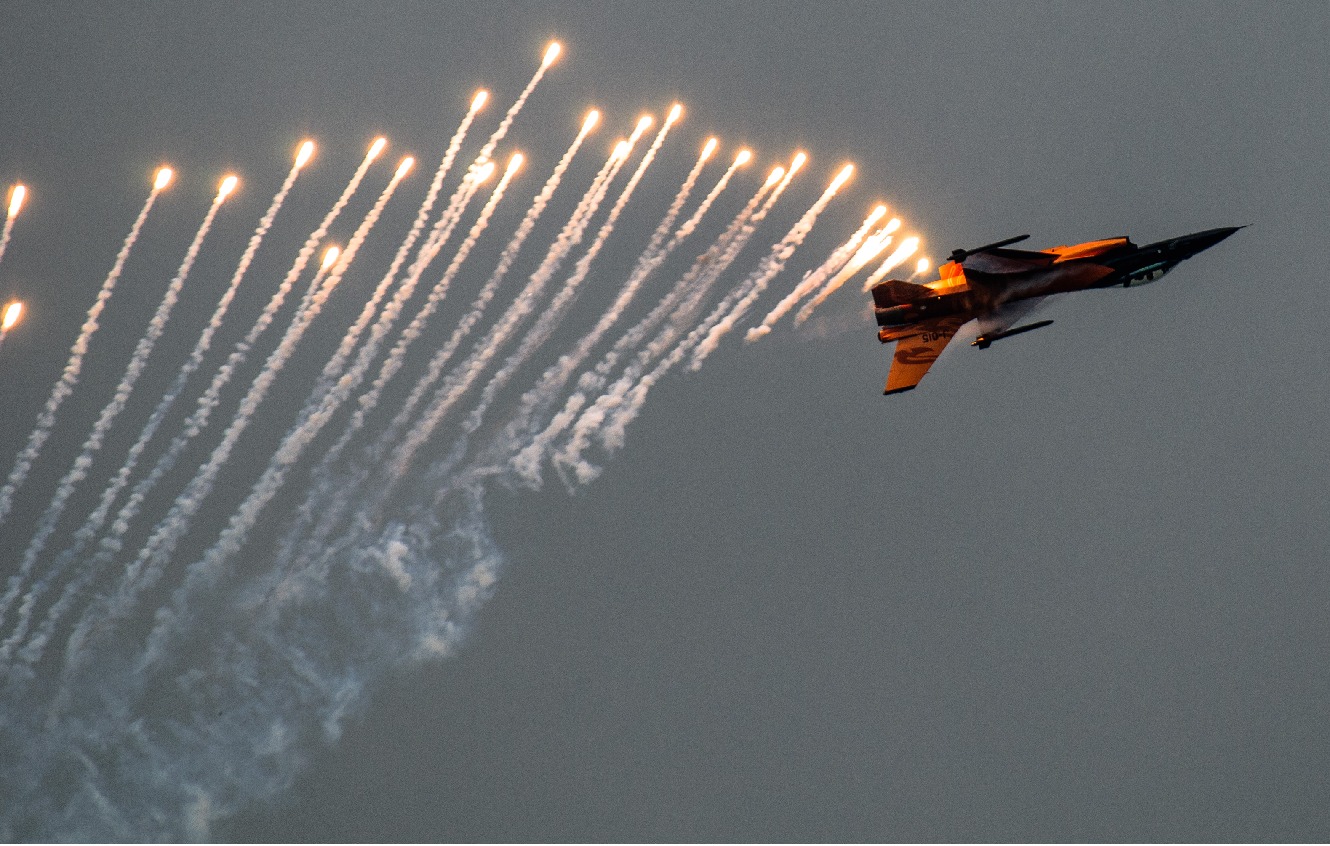To enhance its defense capabilities amid escalating maritime tensions with China, the Philippines is currently in talks with the United States to acquire combat-proven F-16 fighter jets.
Australia’s E7 Wedgetail Makes The 1st Kill; Quite Likely Behind Downing Of Russian Su-34 Bombers: Analysis
The Philippine Ambassador to the United States, Jose Manuel Romualdez, has disclosed ongoing discussions regarding Manila’s possible acquisition of F-16 fighter jets from Washington.
Romualdez emphasized the long-standing desire of the Philippine Air Force for F-16 fighter jets, acknowledging their effectiveness in air defense during an interview with CNN Philippines.
Romualdez pointed out the adaptability and proven effectiveness of the F-16, which can handle air-to-air combat, ground attacks, and electronic warfare.
While discussing the potential deal, the ambassador did not provide a specific timeline but mentioned that “open discussions” are ongoing. However, the Philippines seems to lean towards acquiring used aircraft rather than purchasing brand-new ones.
The ambassador underscored challenges posed by the Philippines’ procurement law, which requires acquiring brand-new equipment and may complicate the deal.
Romualdez proposed that considering the substantial expense of brand-new fighter jets, opting for a slightly used aircraft could present a practical and more cost-effective solution.
Nonetheless, if the F-16 deal materializes, it will significantly enhance the country’s air warfare capabilities.
The nation is strengthening its defense capabilities by modernizing its armed forces and establishing a substantial presence in the exclusive economic zone, especially in the West Philippine Sea, where maritime tensions with China persist.
In 2024, the ambassador anticipates increasing military and defense cooperation between Manila and Washington.
The increasing cooperation between the two countries became apparent earlier this year when the Philippines granted expanded access to four new bases for US troops. This strategic move holds significance due to the strategic location of the bases in the southwest Pacific.
In the aftermath of this development, the US military has progressively heightened its regional activities. Notably, in March, the US Air Force deployed F-22s to the Philippines, marking the first instance of fifth-generation aircraft operating in the country.
Philippines Long-Standing Desire To Procure F-16
The Philippine Air Force (PAF) faces a pressing requirement for an advanced fighter aircraft capable of safeguarding the country’s airspace and surrounding waters, particularly in light of heightened tensions in the South China Sea.
The country’s Air Force has long wanted to procure modern fighter jets. The decision to retire the F-5s in the mid-2000s was retrospectively deemed ill-conceived, leaving the PAF with an array of propeller-driven aircraft and a void in genuine supersonic capabilities.
The need to modernize the aging air fleet was explicitly articulated in 2014, leading to Flight Plan 2028, which was officially initiated in 2015.
In response, the PAF, rather than immediately pursuing high-performance fighters, opted to acquire a dozen KAI FA-50 Golden Eagle supersonic light fighters from Korea.
Drawing on F-16 technology, the relatively cost-effective FA-50 was an advanced trainer, an effective precision attack, and an air warfare platform.
Since entering service in 2016, the FA-50s have been utilized extensively in combat against insurgents, yielding both success and controversy.
Simultaneously, the PAF advocated funding the long-planned acquisition of a single-engine fighter aircraft with Beyond Visual Range (BVR) capabilities.

The service is actively deliberating between the widely recognized F-16 fighter and Sweden’s Saab JAS 39C/D MS20 fighter, carefully weighing the pros and cons of each option.
The preference for single-engine models, as explained by defense expert Miguel Miranda, stems from historical factors and cost considerations.
The Block 70/72 version of the F-16, which is currently being proposed to the Philippines, represents the latest iteration of this enduring fighter aircraft.
On June 24, 2021, the US State Department approved a potential sale of 12 F-16 Block 70/72 fighters to the Philippines, valued at approximately US$2.43 billion.
This included ten single-seat F-16Cs, two F-16D two-seaters, related equipment, spares, and training. However, the Philippines deemed the deal too expensive.
The F-16 procurement plan constitutes a significant portion of the Philippines’ modest annual defense budget, just US$4.26 billion.
The latest statement from the Ambassador also suggests that the country is exploring the possibility of procuring used F-16s rather than new ones due to budgetary constraints.
- Contact the author at ashishmichel@gmail.com
- Follow EurAsian Times on Google News




